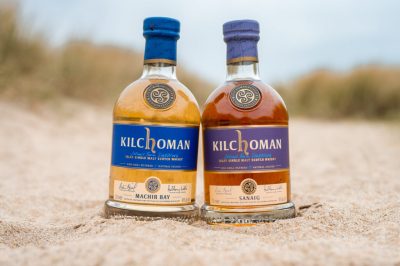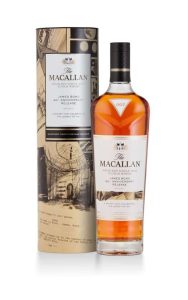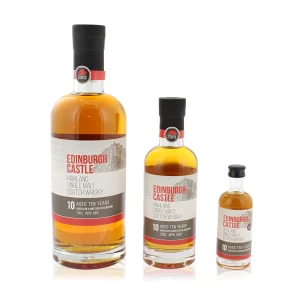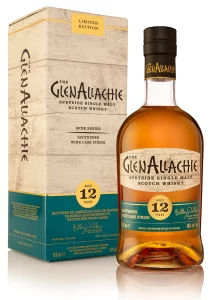Single malt scotch vs whiskey is a topic that has been debated among whisky enthusiasts for decades. The terms “scotch” and “whiskey” are often used interchangeably, but there are distinct differences between the two. Scotch whisky is a type of whisky that is made in Scotland, while whiskey is a distilled spirit that can be made in any country.
Additionally, single malt scotch is a specific type of scotch whisky that is made from malted barley and distilled at a single distillery. In this blog post, we will explore the differences between single malt scotch and whiskey and help you understand what sets them apart.
What is single malt scotch and whiskey?
Single malt scotch is a specific type of scotch whisky that is made from 100% malted barley and distilled at a single distillery in Scotland. The production of single malt scotch is heavily regulated and must adhere to strict laws and guidelines, including the use of only Scottish-grown barley, the aging of the whisky for a minimum of three years in oak casks, and the bottling of the whisky at a minimum of 40% alcohol by volume.
Whiskey, on the other hand, is a distilled spirit that can be made from a variety of grains, including barley, corn, rye, and wheat, and can be produced in any country. The production of whiskey is also subject to regulation, but the laws and guidelines vary by country.
In the United States, for example, the whiskey must be aged for a minimum of two years in new, charred oak barrels and bottled at a minimum of 40% alcohol by volume to be considered “straight whiskey.” In Ireland, whiskey is typically triple-distilled and aged for a minimum of three years in wooden casks.
Overall, while both single malt scotch and whiskey are types of distilled spirits, they differ in their specific production methods, ingredients, and regulations.
Differences between single malt scotch and whiskey
There are several differences between single malt scotch and whiskey, including:
- Ingredients: Single malt scotch is made only from malted barley, while whiskey can be made from a variety of grains, including barley, corn, rye, and wheat.
- Production location: Single malt scotch must be produced in Scotland, while whiskey can be produced in any country.
- Production method: Single malt scotch is distilled at a single distillery, while whiskey can be blended from multiple distilleries.
- Aging requirements: Single malt scotch must be aged for a minimum of three years in oak casks, while whiskey aging requirements vary by country.
- Flavor profile: Single malt scotch is known for its complex flavors and aromas, which are influenced by the region of Scotland where it was produced and the aging process. Whiskey, on the other hand, can have a wide range of flavor profiles depending on the grains used and the aging process.
Overall, while both single malt scotch and whiskey are types of distilled spirits, they differ in their specific production methods, ingredients, and flavor profiles.
The production process of single malt scotch vs whiskey
Single malt scotch and whiskey are both types of distilled spirits made from fermented grains, but they differ in several ways, including their production processes.
Here are the main differences in the production process of single malt scotch and whiskey:
Single Malt Scotch:
- Ingredients: Single malt scotch is made exclusively from malted barley, water, and yeast.
- Malting: The malted barley is soaked in water and allowed to sprout, which activates enzymes that will later help break down the starch in the barley during the mash.
- Mash: The malted barley is ground and mixed with hot water to create a sweet, liquid mash. The mash is then cooled, and yeast is added to start fermentation.
- Fermentation: The mash is left to ferment in large wooden or stainless steel tanks for several days until it becomes a low-alcohol liquid called “wash.”
- Distillation: The wash is then distilled twice in copper pot stills to create a clear, high-alcohol spirit known as “new make” or “white dog.”
- Aging: The new make is then aged for a minimum of three years in oak barrels that have previously held sherry, bourbon, or other spirits. During aging, the spirit takes on flavor and color from the wood and also becomes smoother and more complex in taste.
- Bottling: Once the single malt scotch has reached the desired age and flavor profile, it is bottled and sold.
Whiskey:
- Ingredients: Whiskey can be made from a variety of grains, including barley, corn, rye, and wheat.
- Malting: Some whiskey producers use malted barley, while others do not. If malted barley is used, it is sprouted and processed in the same way as single malt scotch. If not, the grain is typically ground and mixed with hot water to create a mash without malting.
- Mash: The mash is then cooled, and yeast is added to start fermentation, just as with single malt scotch.
- Distillation: The wash is then distilled in large column stills or pot stills to create a clear, high-alcohol spirit. The number of distillations and the type of still used can vary depending on the producer and the type of whiskey being made.
- Aging: The new make is then aged for a minimum of two years in oak barrels. The type of barrel used can vary, but most whiskey producers use barrels that have previously held bourbon or other types of whiskey. During aging, the spirit takes on flavor and color from the wood and also becomes smoother and more complex in taste.
- Blending: Some types of whiskey, such as blended whiskey and bourbon, are blended with other spirits to create a consistent flavor profile. Single malt scotch, on the other hand, is not typically blended.
- Bottling: Once the whiskey has reached the desired age and flavor profile, it is bottled and sold.
Ingredients used in single malt scotch and whiskey
Single-malt scotch and whiskey are both types of distilled alcoholic beverages that are made from various ingredients. The main ingredient in both is malted barley, which is used to make the mash that is fermented to create alcohol.
In addition to malted barley, other grains can also be used in the mash. For example, rye, corn, and wheat are commonly used in American whiskeys, while Irish whiskeys often include unmalted barley along with malted barley.
Water is also a crucial ingredient in the production of scotch and whiskey, as it is used to dilute the alcohol and control the fermentation process.
Yeast is another important ingredient that is used to ferment the mash and convert the sugars into alcohol.
Finally, the flavor and aroma of scotch and whiskey can be influenced by the type of barrel in which it is aged. Common types of barrels used for aging include oak, sherry, and bourbon barrels.
Overall, the specific ingredients used in single malt scotch and whiskey can vary depending on the recipe and production process used by each distillery.
Popular brands of single malt scotch and whiskey
There are many popular brands of single malt scotch and whiskey from around the world, each with its own unique flavor profiles and production methods.
Here are a few examples of some popular brands:
Single Malt Scotch:
- The Macallan
- Glenlivet
- Lagavulin
- Talisker
- Highland Park
- Laphroaig
- Aberlour
- Bowmore
- Ardbeg
- Glenfiddich
Whiskey:
- Jack Daniel’s
- Jim Beam
- Maker’s Mark
- Wild Turkey
- Bulleit
- Crown Royal
- Johnnie Walker
- Jameson
- Bushmills
- Canadian Club
Of course, this is just a small selection of the many brands of scotch and whiskey available. The best way to find your favorite is to try different brands and types to discover your preferred flavor profile.
Aging process and the effect on the taste of single malt scotch and whiskey
The aging process is a crucial factor in the production of single malt scotch and whiskey, as it can have a significant impact on the taste and aroma of the final product. During aging, the alcohol is stored in barrels made from various types of wood, which can add unique flavors and aromas to the whiskey.
The length of time that the whiskey is aged can also affect its taste. In general, the longer the whiskey is aged, the smoother and more complex its flavor will be. However, aging too long can also lead to over-oaked or bitter flavors.
Here are some examples of how aging can affect the taste of single malt scotch and whiskey:
- Oakiness: The wood from the barrel can add notes of vanilla, caramel, and spice to the whiskey while also imparting an oaky flavor.
- Sweetness: As the whiskey ages, it can develop sweeter notes, such as honey, toffee, or dried fruit.
- Smokiness: Some single malt scotches, particularly those from Islay, are aged in barrels that previously held peated whiskey. This can result in a smoky, peaty flavor.
- Complexity: As the whiskey ages, it can develop more complex and nuanced flavors with a wider range of notes and aromas.
Overall, the aging process is a critical factor in the production of single-malt scotch and whiskey, and it can have a significant impact on the final product’s taste, aroma, and overall quality.
The flavor profile of single malt scotch vs whiskey
Single malt scotch and whiskey have distinct flavor profiles that are influenced by various factors, such as the ingredients used, the production process, and the aging process.
Here are some general differences in flavor profiles between the two:
Single Malt Scotch:
- Often has a complex flavor profile with a range of notes, such as fruit, spice, and oakiness
- It can have a smoky, peaty flavor depending on the region it’s produced in and the type of barrel used for aging
- Generally has a rich and full-bodied taste, with a long and satisfying finish
- The taste and aroma can vary depending on the specific distillery and the production process they use
- Single malt scotch is often considered a more sophisticated and refined drink
Whiskey:
- Has a wide range of flavor profiles depending on the type and region of production
- American whiskeys tend to be sweeter and smoother, with notes of caramel, vanilla, and spice
- Irish whiskeys often have a smoother taste with a subtle sweetness and notes of fruit
- Canadian whiskeys are generally light and smooth with a hint of rye spiciness
- Generally, whiskey has a less complex flavor profile than single malt scotch, with a shorter finish
- Whiskey is often considered a more approachable and versatile drink, suitable for cocktails and mixed drinks
Overall, both single malt scotch and whiskey offer unique and enjoyable drinking experiences, each with its own distinct flavor profiles. It ultimately comes down to personal preference and taste.
How to drink single malt scotch and whiskey
There are several ways to drink single malt scotch and whiskey, and the method you choose may depend on personal preference and the occasion.
Here are some common ways to enjoy these spirits:
- Neat: This means drinking the whiskey straight, without any mixers or ice. This is a popular way to enjoy single malt scotch, as it allows you to fully appreciate the complex flavors and aromas of the whiskey.
- On the rocks: Adding a few ice cubes to the whiskey can help to dilute the alcohol and bring out the flavors while also keeping the drink cool. However, be careful not to add too much ice, as it can quickly dilute the whiskey and alter the taste.
- With a splash of water: Adding a small amount of water to the whiskey can help to open up the flavors and aromas, particularly in stronger or more complex whiskeys.
- In a cocktail: Whiskey can be used in a variety of cocktails, such as a whiskey sour or an old fashioned. However, keep in mind that the addition of other ingredients can mask the flavors of the whiskey.
When drinking single malt scotch or whiskey, it’s important to take your time and savor the flavors and aromas. Swirl the glass to release the aromas, take a small sip, and let it sit on your tongue for a few seconds before swallowing. Drinking slowly and appreciating the complexity of the whiskey can enhance the overall experience.
Food pairing with single malt scotch and whiskey
When it comes to pairing food with single malt scotch and whiskey, there are a few general guidelines to keep in mind. First, it’s best to avoid overly spicy or heavily flavored dishes that might overpower the subtle flavors of the whiskey. Instead, look for dishes that complement and enhance the flavors of the whiskey.
Here are some ideas:
- Cheese: Cheeses like cheddar, gouda, and blue cheese can be great pairings for single malt scotch and whiskey. The rich, creamy flavors of the cheese can complement the smoky, oaky notes of the whiskey.
- Chocolate: Dark chocolate with a high percentage of cocoa can be a great pairing for whiskey. The bitterness of the chocolate can complement the sweetness of the whiskey, while the cocoa can bring out the rich, complex flavors of the whiskey.
- Charcuterie: A plate of cured meats, such as prosciutto or salami, can be a good match for whiskey. The salty, savory flavors of the meats can balance out the sweetness of the whiskey and provide a nice contrast.
- Grilled or roasted meats: Grilled or roasted meats like steak, lamb, or pork can be a good pairing for smoky, peaty single malt scotches. The smoky flavors of the whiskey can complement the charred, savory flavors of the meat.
- Seafood: Seafood like smoked salmon or oysters can be a good pairing for lighter, more delicate whiskeys. The briny flavors of the seafood can complement the subtle flavors of the whiskey.
Overall, the key to pairing food with single malt scotch and whiskey is to experiment and find what works best for your palate. Don’t be afraid to try different combinations and see what works for you.
The cost of single malt scotch vs whiskey
The cost of single malt scotch and whiskey can vary widely depending on a number of factors, such as the brand, age, and rarity of the bottle. In general, single malt scotches tend to be more expensive than whiskeys, although there are certainly exceptions.
Single malt scotch is made from malted barley and distilled in Scotland, while whiskey can be made from a variety of grains and distilled in different countries around the world. Single malt scotch is often considered to be a premium spirit due to its history, tradition, and strict regulations that govern its production. As a result, many single malt scotches are aged for long periods of time in oak barrels, which can add to the cost.
Whiskey, on the other hand, can be made in a variety of styles and can be aged for different periods of time. While some whiskeys can be quite expensive, such as rare bottles of Japanese whiskey or high-end bourbons, there are also many affordable options available.
Ultimately, the cost of single malt scotch and whiskey is determined by a variety of factors, and it’s up to the consumer to decide what they’re willing to pay for a particular bottle. Whether you prefer the rich, complex flavors of single malt scotch or the bold, spicy notes of whiskey, there are plenty of options available at a range of price points.
The popularity of single malt scotch vs whiskey in different countries
The popularity of single malt scotch and whiskey can vary depending on the country and region. While both spirits are enjoyed around the world, there are some notable differences in their popularity in different parts of the globe.
In Scotland, single malt scotch is the most popular type of whiskey, and it is widely consumed and celebrated as a national beverage. In the United States, whiskey is the most popular spirit, and bourbon, a type of whiskey made from corn, is particularly popular in the southern states.
In Japan, whiskey has become increasingly popular in recent years, with Japanese whiskey winning numerous awards and gaining a reputation for its high quality.
In Europe, single malt scotch is popular in countries like England, Germany, and France, while Irish whiskey is popular in Ireland and around the world. In Asia, both single malt scotch and whiskey are popular, with many consumers in China and India developing a taste for premium spirits.
Overall, the popularity of single malt scotch and whiskey can vary widely depending on the region, cultural traditions, and consumer preferences. While both spirits are enjoyed by millions of people around the world, their popularity and consumption patterns can be influenced by a range of factors.
Health benefits and risks of drinking single malt scotch and whiskey
Like all alcoholic beverages, drinking single malt scotch and whiskey comes with both potential health benefits and risks. Here are some of the key factors to consider:
Health Benefits:
- Moderate consumption of single malt scotch and whiskey has been associated with a reduced risk of heart disease and stroke. This is because these spirits contain antioxidants, which can help to protect the heart and improve circulation.
- Drinking single malt scotch and whiskey in moderation has also been linked to a reduced risk of certain types of cancer, such as colon cancer.
- Some studies have suggested that the high levels of polyphenols in whiskey can help to improve cognitive function and reduce the risk of dementia and Alzheimer’s disease.
Health Risks:
- Excessive consumption of single malt scotch and whiskey can lead to a range of health problems, including liver disease, high blood pressure, and an increased risk of certain types of cancer.
- Drinking large amounts of whiskey can also lead to alcohol poisoning, which can be life-threatening.
- Additionally, whiskey is a diuretic, which means that it can lead to dehydration and electrolyte imbalances if consumed in excess.
Overall, the health benefits and risks of drinking single malt scotch and whiskey depend largely on the amount consumed and individual health factors. While moderate consumption of these spirits may offer certain health benefits, excessive drinking can lead to serious health problems. It’s important to drink responsibly and in moderation to minimize the risks associated with alcohol consumption.
Conclusion
This page covers all you need to know on single malt scotch vs whiskey. Single malt scotch and whiskey are both popular and beloved spirits enjoyed around the world. Single malt scotch is made from malted barley and distilled in Scotland, while whiskey can be made from a variety of grains and distilled in different countries.
Both spirits have their own unique flavors and characteristics and can be enjoyed in a variety of ways. While moderate consumption of single malt scotch and whiskey may offer certain health benefits, excessive drinking can lead to serious health problems. Ultimately, the choice between single malt scotch and whiskey comes down to personal preference and taste.




